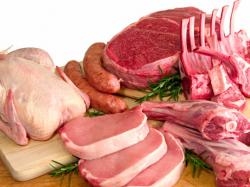America’s Meat Preferences Change Slowly
May 18, 2010 | 2 min to read

The consumption of lamb and goat is going up in the United States. Those who raise these small herbivores have a strong market that has been profitable for several years. The United States produces such a huge amount of beef, pork and poultry that the market for meat of this type pales in comparison. Why has it been so low for so long? I contend it is proof that marketing and consumer response are very strong factors, and resistance to repeating a bad experience remains high for a lifetime.
In World War II, the U.S. military took in a huge number of young men and stationed them all over the world. The war in Europe was initially viewed as the most important, and resources were poured into stopping the German war machine. But, we soon found that the sheer logistics of fighting the Japanese would stretch us so thin that we had to have allies in far-off places to accomplish our task. Those allies came from Australia and New Zealand, free people of common ancestry and similar language who marched and fought side by side with us as we eventually closed in on Japan to end the war with a nuclear attack.
In the process of winning in the Pacific, American troops were fed mutton from Australia. That meat was said to be so foul that the troops came home with a permanent aversion to eating anything like it ever again. I don't know if you have ever had an uncle or father who railed against this product, but in our house when the WWII generation gathered, they could talk about it for hours. Maybe it was one of the things they could talk about, and maybe it shifted their anger and disgust to what the military fed them away from the fighting and death they faced every day. No matter, most never knowingly ate any meat from sheep or goats again.
To read the rest of this story please go to: The High Plains Journal
